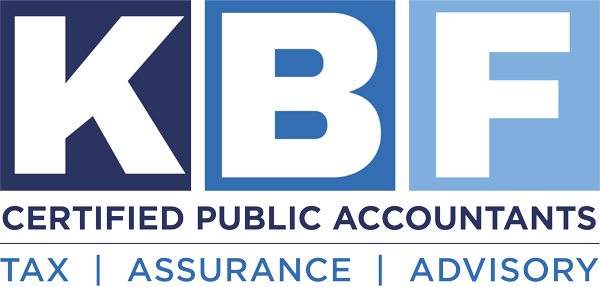COVID-Related Tax Relief Act of 2020 Implications When Reevaluating Year-End Valuation Allowance for Deferred Tax Assets

As the calendar year comes to an end, companies are scrambling to finish their year-end tax planning. Assessing valuation allowances for deferred tax assets (DTAs) is complicated and requires a lengthy process to ensure accuracy. This year, valuation allowances have been difficult to evaluate. The global pandemic, the CARES Act, and now the COVID-Related Tax Relief Act of 2020 (COVIDTRA) have required companies to reassess their valuation allowance positions multiple times throughout the year. With new legislation being passed on December 27, taxpayers must reassess their valuation allowances for the final time in 2020.
Valuation Allowance Overview
A valuation allowance should be recognized if, based on the weight of available evidence, it is more likely than not (more than 50%) that some portion or all of the DTA will not be realized. All companies with significant deductible temporary differences, net operating losses, and tax credit carryforwards are required to evaluate the realizability of their DTAs.
When determining whether a valuation allowance is necessary, taxpayers are required to consider all available evidence, both positive and negative. Taxpayers must determine whether, based on that evidence, a valuation allowance for DTAs is needed. Ordinarily, a company uses information about its current financial position and its results from operations for the current and preceding years. That information is then supplemented by all currently available information about future years. Given the current economic landscape, historical information may not be as relevant, so special attention to other factors may be required. Ultimately, taxpayers must determine whether there is sufficient taxable income of the appropriate character within the carryback or carryforward period to realize the tax benefit of an existing deductible temporary difference.The valuation allowance determination relies on both objective and subjective evidence. Future reversals of existing taxable temporary differences and taxable income in prior carryback years are objective evidence that the tax benefit will be realized. Future taxable income exclusive of reversing temporary differences and carryforwards and various tax planning strategies that could be implemented to take advantage of tax benefits are subjective evidence. For these tax planning strategies to carry significant positive weight, they must be prudent and feasible, and management must be able to control the ability to carry out the tax planning strategy. Tax planning strategies can also be actions that the entity may not ordinarily take but would do so to prevent a net operating loss or tax credit carryforward from expiring unused. If these strategies would result in a realization of the DTAs, then a valuation allowance may not be necessary.
Examples of Positive and Negative Evidence
As mentioned earlier, assessing the need for a valuation allowance requires taxpayers to evaluate both positive and negative evidence. Forming a conclusion that a valuation allowance is not needed is difficult when there is negative evidence such as cumulative losses in recent years (usually a three-year period). Other examples of negative evidence that might support a conclusion that a valuation allowance is needed include, but are not limited to, (i) a history of net operating losses or tax carryforwards expiring unused; (ii) losses expected in early future years (by a presently profitable entity); (iii) unsettled circumstances that, if unfavorably resolved, would adversely affect future operations and profit levels on a continuing basis in future years; and (iv) a carryback or carryforward period that is so brief it would limit the realization of tax benefits if a significant deductible temporary difference is expected to reverse in a single year.On the other hand, examples of positive evidence that might support a conclusion that a valuation allowance is not needed include, but are not limited to, (i) existing contracts or firm sales backlog that will produce more than enough taxable income to realize the DTAs based on existing sales prices and cost structures; (ii) an excess of appreciated asset value over the tax basis of the entity’s net assets in an amount sufficient to realize the DTA; and (iii) a strong earnings history exclusive of the loss that created the future deductible amount (tax loss carryforward or deductible temporary difference) coupled with evidence indicating that the loss is an aberration rather than a continuing condition.
COVIDTRA Implications
On December 27, 2020, the new coronavirus relief package was signed into law. One major provision in the relief bill is the COVIDTRA, which clarifies that taxpayers whose Paycheck Protection Program (PPP) loans are forgiven are allowed to deduct expenses that were paid with PPP loan proceeds. This overrides previous IRS guidance that stated businesses could not claim deductions for expenses paid with PPP loan proceeds when the loan is forgiven or expected to be forgiven. Additionally, when a PPP loan is forgiven, the borrower does not need to include the amount forgiven in taxable income. Thus, the new guidance amplifies the benefit for taxpayers. Although the new guidance may not change a taxpayer’s existing DTAs, it could now create a net operating loss in the current year. This new “negative evidence” could support the need to reassess the need for a valuation allowance. Additionally, the new legislation provides funding for a second round of PPP loans for 2021. If these loans receive similar tax treatment as the first round of PPP loans, taxpayers could expect to be in a loss position for 2021 as well. Taxpayers should reexamine their current tax position and determine whether reassessing their valuation allowance is necessary given the new legislation.
